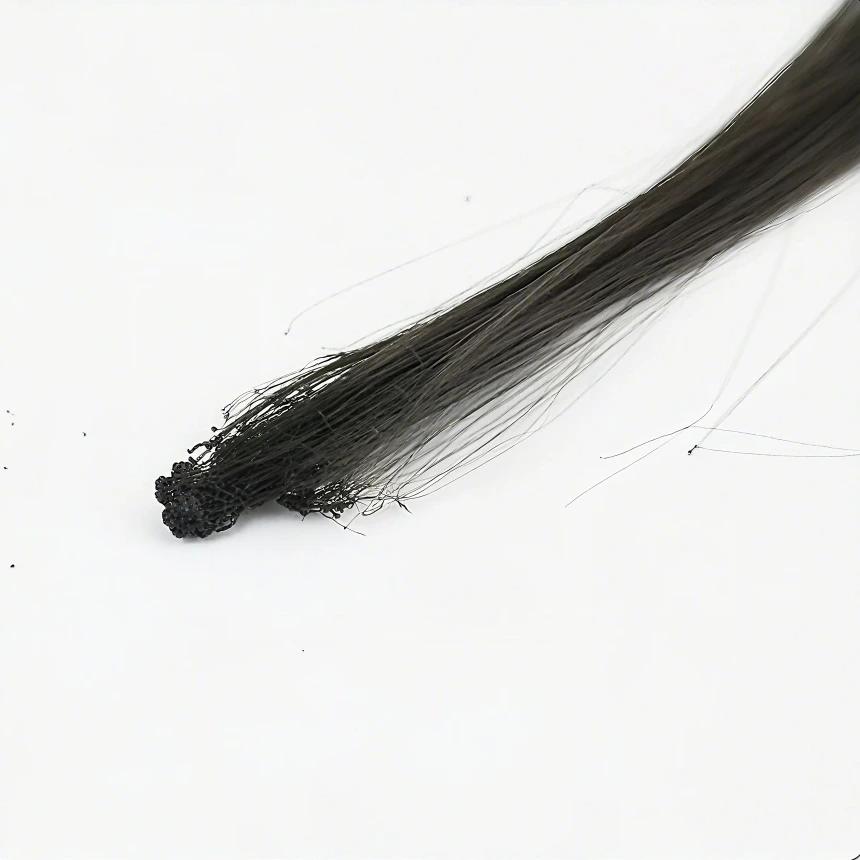Clip Ins: Are They Human Hair?
Exploring the ultimate solution for instant length and volume—comparing human hair vs. synthetic, durability, styling, and more
The Convenience of Clip-In Extensions
When it comes to instant length and volume, clip-in hair extensions stand out as one of the most popular and convenient solutions available. But with countless options on the market, selecting the right type requires understanding key differences.
The core decision lies in choosing between human hair and synthetic fiber. Evaluating factors like price, durability, styling capabilities, and potential damage is crucial for making an informed purchase that aligns with your beauty goals and lifestyle.
Human Hair vs. Synthetic Clip Ins

Human Hair Extensions
- Heat-stylable (curl, straighten, wave)
- Long lifespan (6+ months with proper care)
- Natural look and movement
- Can be recolored and restyled
- Higher upfront cost, better long-term value

Synthetic Extensions
- Pre-styled, cannot tolerate high heat
- A relatively short lifespan (few weeks to months)
- May have unnatural shine/texture
- Cannot be recolored
- Lower cost, higher replacement frequency
Key Factor Comparison
|
Factor
|
Human Hair
|
Synthetic Hair
|
|---|---|---|
|
Styling Versatility |
Full heat styling capability |
Limited (no high heat) |
|
Durability |
6+ months |
4-8 weeks |
|
Natural Appearance |
Seamless blend with natural hair |
May appear artificial in bright light |
|
Color Customization |
Can be dyed/toned |
Cannot be colored |
|
Cost Efficiency |
Higher long-term value |
Lower initial cost, higher long-term expense |
Clip Ins Hair Damage: Myth or Reality?
Good news: Clip-ins are widely considered the least damaging type of hair extension. They’re not permanently attached and put no tension on hair follicles when used correctly.
Traction Alopecia Risk
Very low compared to tape-in or sew-in extensions. Clip-ins are worn temporarily, with weight distributed across multiple clips.
Breakage Causes
Damage typically occurs from improper use: snapping clips shut on hair or pulling them out roughly—not from the clips themselves.
Prevention Tips
❖Avoid sleeping/exercising with clip-ins
❖Give hair regular breaks (don’t wear daily)
❖Use heat protectant on natural hair and human extensions
❖Ensure hair is smooth/tangle-free before application
How to Make Clip Ins Secure & Comfortable
Start with largest wefts at the back, just above the nape. Clip onto horizontal sections, then release a new hair layer to cover the weft. Work upward and toward the sides for a secure, natural look.
Backcomb the root area of the hair section gently before clipping in a weft. This creates essential texture and grip for the clips—just be gentle to avoid unnecessary breakage and damage.
For fine/slippery hair, use a dot of extension-safe adhesive on clip silicone pads. Specialized clips with extra teeth also provide stronger hold.
Match weft size to hair section size. A large, heavy weft on a tiny hair section causes strain and won’t stay secure throughout the day.

Final Thoughts
Choosing the right clip-ins depends on your budget and desired use. For unparalleled versatility, natural appearance, and long-term value, high-quality human hair clip-ins are the superior choice.
With proper care and application, you can enjoy dramatic transformations without damage—embracing the volume, length, and confidence that a perfect set of clip-ins provides.